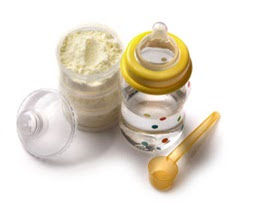Unregulated Chemicals Might Delay Ozone Recovery By Up To 30 Years
Alfredo Carpineti
New research has discovered that unregulated chemicals in the atmosphere could significantly delay the recovery of the ozone layer.
According to a new paper, published in Nature Communications, a chemical called dichloromethane could delay the closing of the ozone hole by five to 30 years.

Long-lived chlorine-based chemicals known as chlorofluorocarbons (CFCs) were responsible for the depletion of the stratospheric ozone layer.
The situation became critical over Antarctica, with CFCs banned in 1987 with the introduction of the UN Montreal Protocol.
Thanks to the ban, the ozone layer began to heal, and it was estimated that it would completely recover sometime between 2046 and 2057.
But the increase in short-lived ozone-depleting substances like dichloromethane are pushing that date back.
"Dichloromethane is a man-made ozone-depleting chemical that has a range of industrial applications," lead author Dr Ryan Hossaini of Lancaster University said in a statement.
"Unlike CFCs and similar long-lived gases that are responsible for most ozone depletion, dichloromethane has a short atmospheric lifetime so has not been controlled by the Montreal Protocol. Despite this, increased production has led to a rapid increase in its atmospheric concentration over the past decade.”
Hossaini and his team estimate that between 2000 and 2012, low-altitude concentrations of dichloromethane increased by about 8 percent per year.
And if we take the atmosphere as a whole, the concentration of this chemical has almost doubled between 2004 and 2014.
Every year, about 1 million metric tons of dichloromethane are released.
"While ozone depletion from dichloromethane is currently quite modest, it is uncertain how the amount of this gas in the atmosphere will change in the future," said Hossaini.
"Our results show that continued sustained growth in its concentration could substantially delay recovery of the ozone layer, offsetting some of the future benefits of the Montreal Protocol."
Understanding the long-term impact of these gasses can help scientists produce better models of the ozone abundance in the atmosphere and how changes in distribution can impact the wider climate of our planet.
"We should be mindful of the growing threat to stratospheric ozone posed by dichloromethane and similar chemicals not controlled by the Montreal Protocol," continued Dr Hossaini. "There is work to be done to better understand and quantify their main sources to the atmosphere."
The ozone layer protects us and every other living organism from the harmful ultraviolet radiation of the Sun. Its recovery is incredibly important.
Alfredo Carpineti is a certified doctor of the stars and a master of the quirky world of the quantum. He's a self-confessed astroholic, so anything from galaxies to black holes, from Pluto to pulsars, you should send his way. This Italian maestro is such a huge fan of physics that the "sound" of the detection of gravitational waves is actually his ringtone.
RELATED POSTS:
WHAT IS OZONE?
CLICK HERE . . .
CLICK HERE . . .
CLICK HERE . . .
.
 |
| Multi-Media Filter, Highly-Activated Carbon Filter, Zeolite-Process Water Softener With Brine Tank, Fiberglass Ballast-Type Pressure Tank (fully automatic backwash & regeneration) |
.
PURICARE
Treatment
Systems
.
...
Aganan, Pavia, Iloilo, Philippines
Aganan, Pavia, Iloilo, Philippines
...
CLICK HERE . . . to view company profile . . .
CLICK HERE . . . to view company profile . . .






























